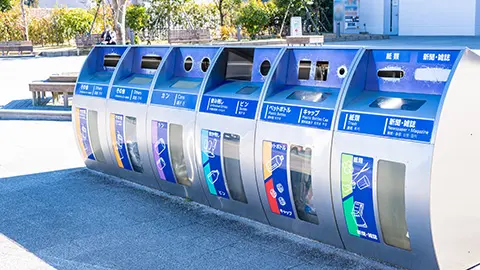VOL.195 AUGUST 2024
EXPLORE THE UNIQUE CHARM OF MANGA IN JAPAN
[The Beauty of Japanese Swords] Sword, unsigned Masamune (celebrated Kanze Masamune)

Sword crafted by Masamune, a renowned swordsmith of Sagami Province
(Dimensions: approx. 65cm blade length)
Photo: ColBase
The celebrated “Kanze Masamune,” a National Treasure, is an unsigned katana sword considered to have been crafted by Masamune, a well-known swordsmith of Sagami Province (the greater part of present-day Kanagawa Prefecture) in the Kamakura period* around the first half of the 14th century. Masamune is known for perfecting the Soshu-den** school, which was a renowned school of Japanese sword-making.
An evaluation of this sword describes “the fine quality of the finish and the glitter of fine particles (J. nie) are matchless.”*** This style well represents the characteristics of the Soshu-Den school. “The piece is called Kanze Masamune because it was originally in the possession of the Kanze, a prominent family active in the world of Noh theater. However, according to the Kyôhô Era Handbook of Famous Works (J. Kyôhô meibutsuchô), an Edo-period (1615-1868) sword manual, Tokugawa Ieyasu (1542-1616) took it from the Kanze family and gave it to his son Hidetada (1578-1632). … After the Meiji Restoration (1868), the Tokugawa family presented it to the Arisugawa-no-miya family, and it was passed down within the house of their successors, the Takamatsu-no-miya.” **** Currently, it is in the Tokyo National Museum’s collection.

The nakago or part of the sword that fits into the handle,***** features engravings, including lettering in the Siddham script Bonji.******
Photo: ColBase
* The period from the late 12th century (starting from 1185 or 1192, according to different interpretations) until 1333.
** A school of Japanese sword-making that is said to have been created in Kamakura, Sagami Province (present-day Kamakura City, Kanagawa Prefecture) from the mid to late Kamakura period.
*** **** Quoted from the explanatory text on the e-Museum website
***** The part of the Japanese sword that is held in the hand is called the tsuka, and the blade that fits into it is called nakago.
****** A script used in ancient India for writing Sanskrit and other related characters. The script was introduced to Japan through Asian Continent together with Buddhism. It has a history of use in Japan, particularly in Buddhist temples.
<<Terms used in quoted sections of this text>>
- Jigane (finish): The surface pattern on a sword blade created by repeatedly applying a process called orikaeshi tanren that involves heating a type of steel called tamahagane, the raw material used for making Japanese swords, hammering it thin, folding it in half and hammering it thin again.
Note that “J.” in the text indicates the Japanese way of saying it. - Nie (fine particles): A variety of fine particles that make up the hamon (temper patterns) formed by the yaki-ire (tempering or hardening) process when a heated sword blade is inserted into water. Types of such fine particles include nie and nioi. While the larger nie particles gleam when exposed to light, nioi particles have a hazy appearance. Because of the relative coarseness of nie particles, they are visible to the naked eye.
- Noh theater: A classical Japanese performing art with a history of performance of over 650 years, starting in the Muromachi period (1336-1573). Nohgaku, which includes the noh and kyogen theater forms, has been designated an Intangible Cultural Heritage by UNESCO. The Kanze family is the head of the Kanze School, one of the schools of nohgaku.
- Edo period: The period from the early 17th century to around the middle of the second half of the 19th century. Hidetada was the second shogun of the Edo Shogunate.
- Meiji Restoration: Refers to a series of political and social reforms that took place in Japan in the late 19th century, when the ruling system of the Edo Shogunate collapsed and was replaced by the new Meiji government.
- Arisugawa-no-miya and Takamatsu-no-miya families: Both families were one of the houses of Imperial princes.
